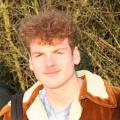IN GREECE, Roger Smith was on his knees collecting seeds.
A local man on horseback, curious as to why a Brit was down in the dirt, had come over to look.
“Anglia,” he muttered before he bolted.
The biologist may have seemed like a madman.
But what the horseman did not know was Roger was in the middle of a worldwide quest to back up Earth’s rarest, most important and most endangered plants.
In 1995 his idea for a Millennium Seed Bank had finally been granted £30 million on the condition it would be up and running by 2000.
It was a long time coming. He had joined Kew’s Royal Botanic Gardens at Wakehurst Place, Haywards Heath, as a seed collector in 1974.
Now he was to bring it into the 21st century with an ultramodern seed vault, potentially a lifeline to lives and livelihoods of millions.
Roger compared the five years leading up to the project’s opening to Nineties TV show Challenge Anneka, where host Anneka Rice was given a task, a time limit and told to make do.
“We were building everything from scratch,” the biologist said.
It was up to Roger and a small team not only to scour the world for the plants most in need of protecting, but to convince those who owned the seeds to allow his team to take them.
“We went to mainly arid and semi-arid places,” he said.
“Most of the people there live subsistence lifestyles and are very dependent on the land and yet they are the first seeing the immediate effects of climate change. So you could make a social intervention on their behalf.
“We always thought of ourselves as collecting seeds in someone else’s garden.
“It’s as if you looked out of your window and saw two people with camels digging up your plants.”
Though it was by no means a mad dash, occasional mix-ups did arise from globetrotting.
“We were in Australia a lot of the time and I remember flying there once, getting off the aircraft and thinking I had a day to recover before a meeting,” he said. “It turned out I had got the date wrong and the meeting was actually in an hour.”
But by the time Prince Charles opened the seed bank in November 2000 the facility was fully operational.
Twenty years later it is home to more than two billion seeds from 190 countries. Roger has since retired.
Nowadays plants arrive by DPD courier and are painstakingly cleaned and tested to ensure they can be preserved at below-freezing temperatures.
Ultimately the bank is still an insurance policy, as current collection chief John Dickie put it.
Recently it used its stocks to restore a seed bank in Aleppo, Syria, in the wake of a destructive civil war.
But the facility’s scientists are not sitting twiddling their thumbs until a plant becomes extinct.
The seed bank is a hive of research as well as an “artist’s supply shop” for interested gardeners.
Among other things John’s 40-strong team is currently investigating crop wild relatives, wild plants similar to domesticated crops which could provide the key to creating hardier food sources resistant to pests.
But even as the seed bank grows and climate change becomes more visible, both Roger and John agree with sadness the project’s importance is still not understood by many.
“When you talk to the man on the street about a plant his two questions will be ‘can I eat it?’ and ‘can it cure my boy’s cancer?’,” John said.
“So the big sell is really enlightened self-interest.
“We have to think of seeds as natural capital, what they can do for us. That’s the only way you can get policymakers to take action.
“But when a plant is gone, it leaves a hole in the food chain.
“It’s very difficult for people to take on board this idea that we’re not in charge of the planet, we’re part of it,” added Roger.
“There’s a quote from the philosopher Marshall McLuhan which sums it up.
“There are no passengers on spaceship Earth. We are all crew.”










Comments: Our rules
We want our comments to be a lively and valuable part of our community - a place where readers can debate and engage with the most important local issues. The ability to comment on our stories is a privilege, not a right, however, and that privilege may be withdrawn if it is abused or misused.
Please report any comments that break our rules.
Read the rules here